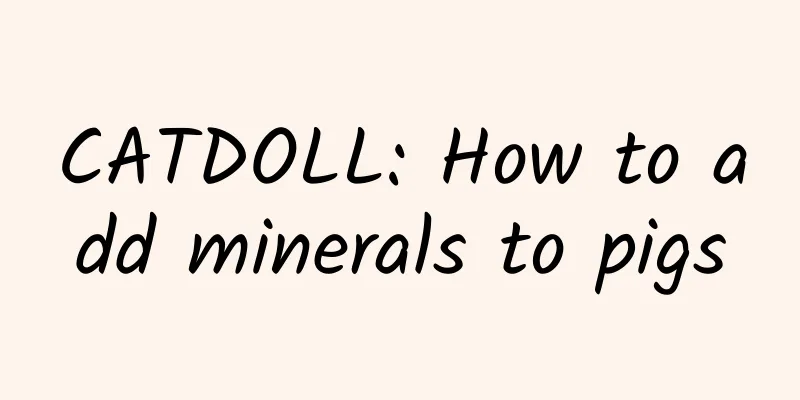CATDOLL : CATDOLL: Centipede breeding technology

|
Farming method 1. Cultivation in boxes. The breeding boxes are made of wooden boards. The size is preferably 55 cm long, 45 cm wide and 30 cm high. A layer of non-toxic plastic film is pasted on the inner wall of the box, and a box cover with iron gauze is provided at the box mouth. After the box is made, it is placed in an appropriate position indoors. Multiple boxes are arranged in a good order. Multiple layers of tiles are placed at the bottom of the box. The distance between the tiles is about 1.5 cm. Cement is used to pad the feet around. Usually 5-6 tiles are stacked in a stack. In this way, the gaps between the tiles can be used for centipedes to live. Before the tiles are placed in the box, they must be washed with water and absorb enough water to create a humid environment for centipedes. And after a certain period of time, a batch of new tiles that have been made with restrictions should be replaced to keep them moist and clean. 2. Cultivate in a tank, usually a ceramic tank with a diameter of 50-60 cm wide and 80-100 cm high. Place it in a suitable position indoors, and put a layer of gravel or broken tiles at the bottom of the tank. Cover it with a 30 cm thick layer of fertile garden soil, slightly level it, and stack tiles on the soil surface in a box-cultivation manner. The top layer of tiles should be about 20 cm away from the tank mouth, and the tank mouth should be covered with a wire gauze cover to prevent the centipede from escaping. 3. Pond culture is to build a pond indoors or outdoors for breeding. The pond is made of brick and cement. The environment in the pond should be warm, cool, humid and quiet. Generally, each indoor pond is about 2 square meters in area, rectangular, and 50-60 cm high. The inner wall is smoothed with cement without any gaps, and lined with agricultural film, or a circle of 20 cm wide glass is inlaid above the pond. No cement is laid on the bottom of the pond. First, a layer of small soil blocks about 10 cm thick is laid, and then 5-6 layers of tiles are piled on it. There is a 1.5 cm gap between the tiles for centipedes to live and lay eggs and hatch. In cold weather areas, a pit 50 to 60 cm deep can be dug at a certain distance from the wall on the inside of the pond wall. Stones, broken bricks and tiles are piled in the pit to create gaps for centipedes to overwinter. The pond mouth is covered with iron gauze or plastic gauze. Feeding method 1. Living habits. Under natural conditions, centipedes generally live on hillsides, fields, roadsides or overgrown areas, or on the edge of a well, in firewood piles and between bricks and tiles. They particularly like damp, old ground. The basic characteristics of their activities are hiding during the day and coming out at night. They stop eating when the temperature is below 10°C and hibernate at -7°C. 2. Reproduction characteristics. The life span of centipedes is only 6 years. After sexual maturity, they usually mate in the early morning after rain in March-May and July-August. They start laying eggs 40 days later. The female centipede lays the fertilized eggs on its back so that they can hatch in time. Each female centipede takes 2-3 hours to ovulate, and lays 80-150 eggs each time. The surface of the eggs is rich in mucus, and the eggs stick together to form an egg mass. During the incubation period, the female centipede does not eat or drink until the young centipedes hatch. 3. Feed. Centipede is a typical carnivore with a wide range of food habits. It especially likes to eat various insects, such as mealworms, crickets, beetles, termites, cicadas, dragonflies, spiders, flies, bees and their eggs, pupae and larvae. It also eats worms, earthworms, snails and the meat, viscera, blood, cartilage of various livestock and aquatic animals. It also eats fruit peels, potatoes, carrots, tender vegetables, milk, bread, etc. as food for centipedes. 4. Construction of breeding ponds. Artificial breeding of centipedes can be done in a tank or pond. For tank breeding, use a worn-out tile tank or ceramic tank, preferably with a diameter of more than 0.5 meters, bury the mouth downward in the soil about 20 centimeters, and compact the soil outside. Use bricks or adobe to build up the middle of the tank, about 10 centimeters lower than the tank surface, leaving a certain gap between the adobe and the tank wall. If you use a complete tank, do not knock off the bottom, and directly build adobe in the tank. A tank with a diameter of 80 centimeters can hold about 200 adult centipedes. When using pond culture, the breeding pond should be built in a sunny, ventilated, drained, damp, secluded place. It can be built indoors or outdoors. It is built with bricks or stones, and the surface is cemented. The height of the pond is 80 cm. The area of the breeding pond can be any size, generally 5-10 square meters. Paste smooth and intact plastic film on the inside of the pond mouth, or use glass sheets to form a circle of about 15 cm wide and at right angles to the pool wall. 500-900 adult centipedes can be placed per square meter of breeding pond. 5. Management points 1. Prevent centipedes from escaping. Centipedes are impatient and can easily escape if preventive measures are not in place. 2. Pay attention to the stocking density. Centipedes must be divided into groups and ponds according to the changes in their body length and size. 3. Manage temperature, humidity and light well and keep the environment quiet. 4. The feed must be kept clean and hygienic, and bait contaminated with pesticides must not be fed. 5. Observe frequently to prevent natural enemies of centipedes from entering the breeding pond. 6. Prevent food and soil from getting moldy. 7. Remove sick centipedes in time. |
<<: CATDOLL: What diseases can be cured by grinding centipedes and scorpions into powder?
Recommend
CATDOLL: What is the best way to propagate Osmanthus fragrans?
There are four ways to propagate osmanthus trees,...
CATDOLL: Prevention and emergency measures for heat stroke in pigs in hot summer weather
Prevention and emergency measures for heat stroke...
CATDOLL: Questions about leeches
Leeches live as short-term parasites outside the ...
CATDOLL: Can puffer fish be farmed in Northeast China?
Pufferfish generally refers to pufferfish, which ...
CATDOLL: Does anyone know what kind of frog or toad this is? It lives in mountain spring water at an altitude of about 2,000 meters. The water is very cold and it lives with stone frogs.
Does anyone know what kind of frog or toad this i...
CATDOLL: Are catfish and silver carp the same fish? What’s the difference?
Catfish belong to the order Siluriformes, and are...
CATDOLL: What does the turtle symbolize?
What does the turtle symbolize? What does the tur...
What should a female cat eat after giving birth?
On the first day after giving birth, the mother c...
CATDOLL: What is the natural enemy of scorpions?
What are the natural enemies of scorpions? 1. Rod...
CATDOLL: How to raise freshwater fish
How to raise freshwater fish Generally, the water...
CATDOLL: There are many mosquitoes in the farm. How should we get rid of them?
1. There are many mosquitoes in the farm. How sho...
A complete guide to ultrasound examinations in sows: steps, tips and considerations
introduction B-ultrasound examination of sows is ...
CATDOLL: What is the water temperature and salinity in seafood ponds for raising snow crabs and king crabs?
Regardless of whether the king crabs are rotten i...
CATDOLL: Can you build a house on a garbage dump? (Can you build a house on a garbage dump?)
1. Is building a house in a garbage pit an illega...
CATDOLL: Why can't the project of raising cockroaches to eat garbage develop? (How much money is needed to raise cockroaches to eat garbage)
1. Why do cockroaches like to eat garbage? Becaus...









